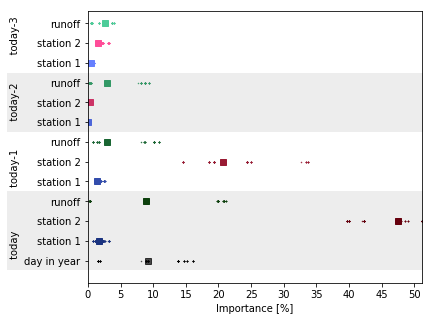Climate change results in altered air and water temperatures. Increases affect physicochemical properties, such as oxygen concentration, and can shift species distribution and survival, with consequences for ecosystem functioning and services. These ecosystem services have integral value for humankind and are forecasted to alter under climate warming. A mechanistic understanding of the drivers and magnitude of expected changes is essential in identifying system resilience and mitigation measures. In this work, we present a selection of state-of-the-art Neural Networks (NN) for the prediction of water temperatures in six streams in Germany. We show that the use of methods that compare observed and predicted values, exemplified with the Root Mean Square Error (RMSE), is not sufficient for their assessment. Hence we introduce additional analysis methods for our models to complement the state-of-the-art metrics. These analyses evaluate the NN's robustness, possible maximal and minimal values, and the impact of single input parameters on the output. We thus contribute to understanding the processes within the NN and help applicants choose architectures and input parameters for reliable water temperature prediction models.
翻译:气候变化导致空气和水温度的改变; 增加影响物理化学特性,如氧浓度,并可改变物种分布和生存,从而对生态系统功能和服务产生影响; 这些生态系统服务对人类具有整体价值,预测在气候变暖时会改变; 对预期变化的驱动因素和规模的机械化理解对于确定系统复原力和减缓措施至关重要; 在这项工作中,我们提出一些最新的神经网络(NN),用于预测德国6个溪流的水温度; 我们表明,使用比较观测到和预测值的方法,例如根平方错误(RMSE),并不足以进行评估; 因此,我们为我们的模型引入更多的分析方法,以补充最新指标; 这些分析评估NNN的稳健性、可能的最高值和最低值,以及单项输入参数对产出的影响。 我们因此帮助了解NN的流程,帮助申请人选择可靠的水温预测模型的架构和输入参数。






